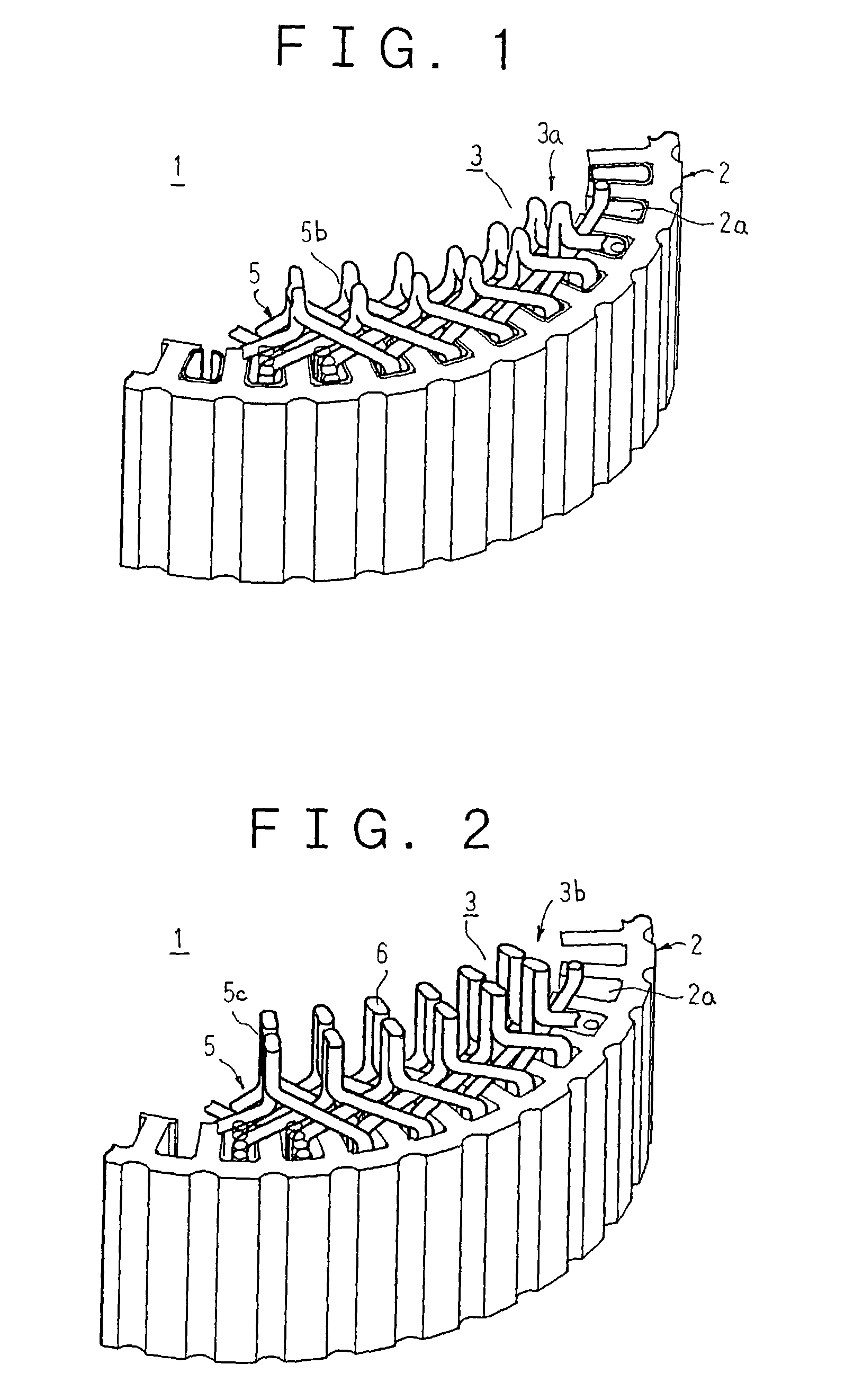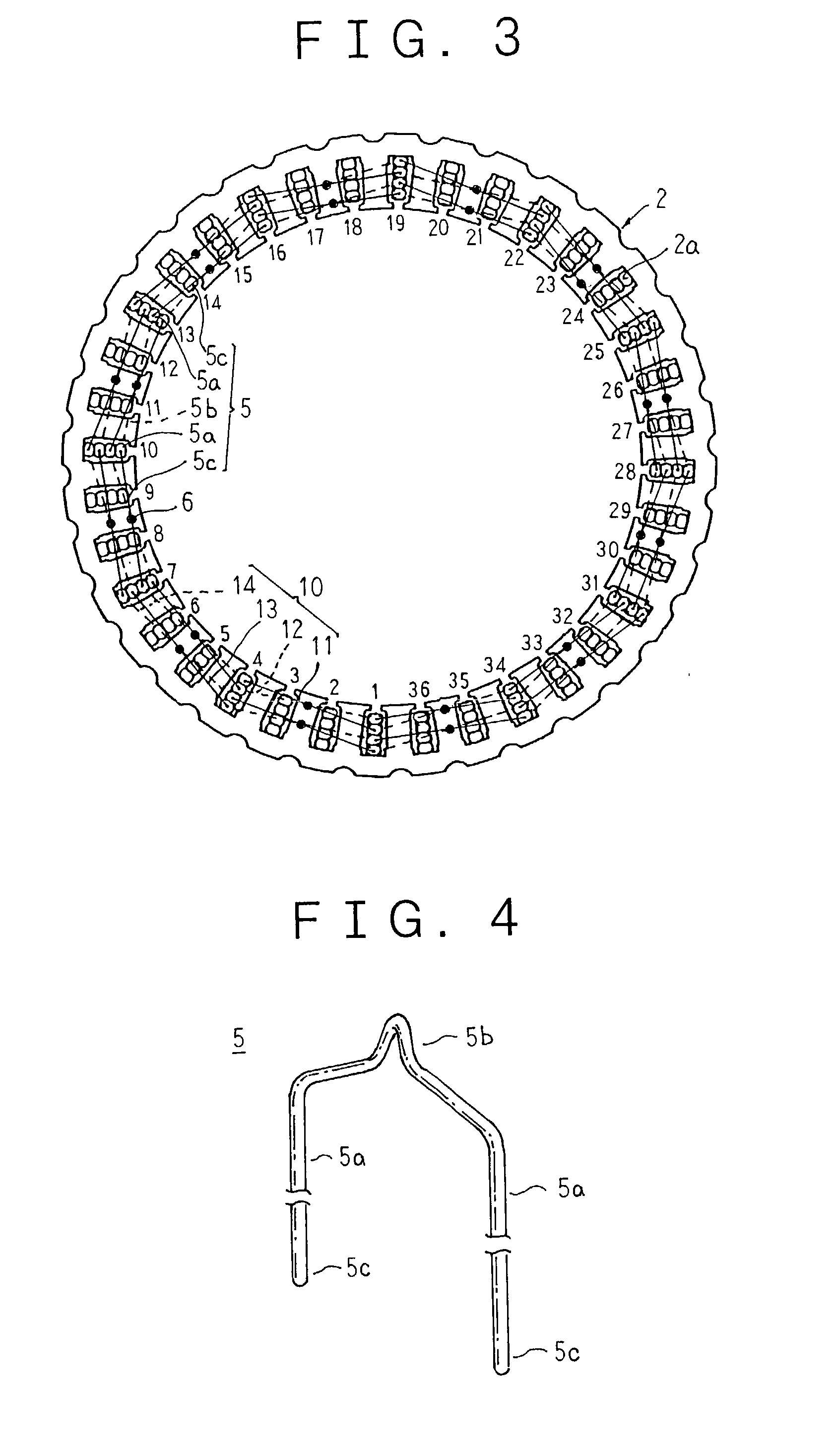Dynamoelectric machine winding joining method
- Summary
- Abstract
- Description
- Claims
- Application Information
AI Technical Summary
Benefits of technology
Problems solved by technology
Method used
Image
Examples
embodiment 1
[0039]FIG. 1 is a perspective from a first end of a stator for an automotive alternator manufactured by a dynamoelectric machine winding joining method according to Embodiment 1 of the present invention, FIG. 2 is a perspective from a second end of the stator for an automotive alternator manufactured by the dynamoelectric machine winding joining method according to Embodiment 1 of the present invention, FIG. 3 is an end elevation explaining connections in a first stator winding phase portion of the stator shown in FIG. 1, FIG. 4 is a perspective showing a conductor segment constituting a stator winding of the stator shown in FIG. 1, and FIGS. 5 and 6 are a perspective and an end elevation, respectively, explaining the dynamoelectric machine winding joining method according to Embodiment 1 of the present invention.
[0040]Moreover, in FIG. 3, 1 through 36 represent slot numbers, broken lines indicate windings at a first end of the stator core, solid lines indicate windings at a second ...
embodiment 2
[0068]In Embodiment 2, the free ends 5c are joined together by soldering instead of TIG welding. Moreover, the rest of this embodiment is constructed in a similar manner to Embodiment 1 above.
[0069]Thus, similar effects to those in Embodiment 1 above can also be achieved in Embodiment 2.
[0070]Furthermore, in Embodiment 2, because the free ends 5c are joined together by soldering, the joint portions become a spherically-bulging shape. However, because the clearance between the pairs of free ends 5c is ensured, short-circuiting among the joint portions is suppressed.
embodiment 3
[0071]In Embodiment 3, as shown in FIG. 8, conductor segments (electrical conductors) 7 formed with a general U shape in which a pair of straight portions 7a are linked by a generally V-shaped return portion 7b by bending a copper wire having a rectangular cross section coated with an electrical insulator are used, and as shown in FIG. 9 and FIG. 10, first and second radial restraining members 23 and 24 made of a stainless steel in which first and second recess portions 23a and 24a for restraining free ends 7c (joint end portions) are formed on tip portions are used. Moreover, the rest of this embodiment is constructed in a similar manner to Embodiment 1 above.
[0072]In Embodiment 3, in a similar manner to Embodiment 1 above, the conductor segments 7 are inserted from the first end surface of the stator core 2 two by two into pairs of slots 2a three slots apart, and at the second end surface of the stator core 2, thirty-six rows of four free ends 7c are arranged into an annular shape...
PUM
| Property | Measurement | Unit |
|---|---|---|
| aaaaa | aaaaa |
Abstract
Description
Claims
Application Information
 Login to View More
Login to View More - R&D
- Intellectual Property
- Life Sciences
- Materials
- Tech Scout
- Unparalleled Data Quality
- Higher Quality Content
- 60% Fewer Hallucinations
Browse by: Latest US Patents, China's latest patents, Technical Efficacy Thesaurus, Application Domain, Technology Topic, Popular Technical Reports.
© 2025 PatSnap. All rights reserved.Legal|Privacy policy|Modern Slavery Act Transparency Statement|Sitemap|About US| Contact US: help@patsnap.com



